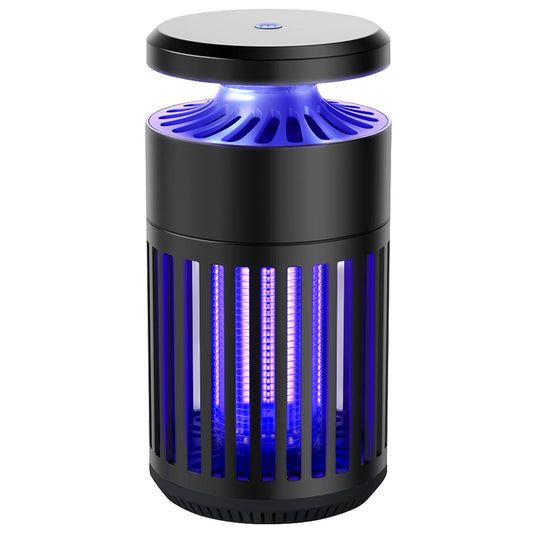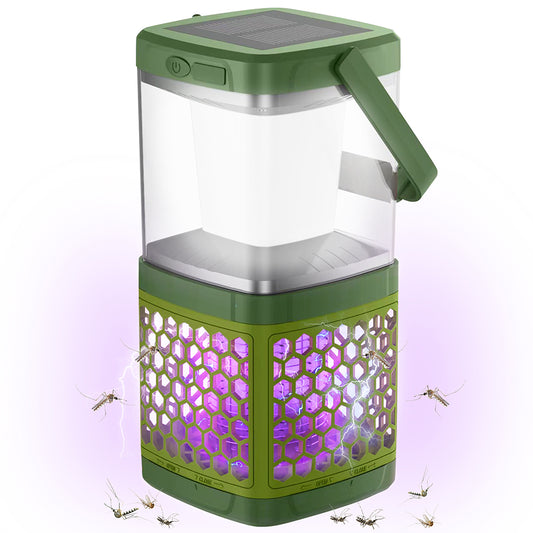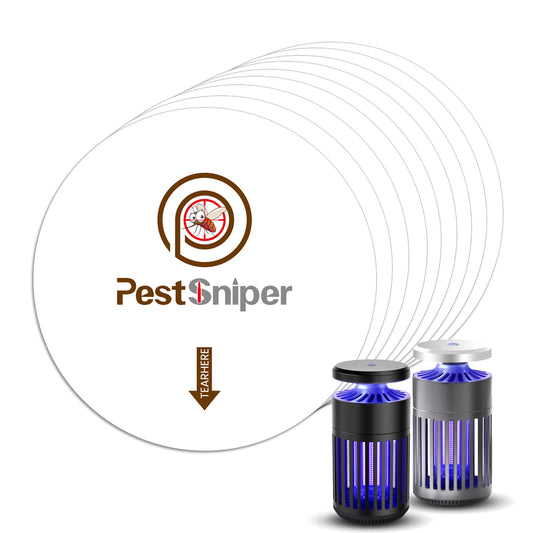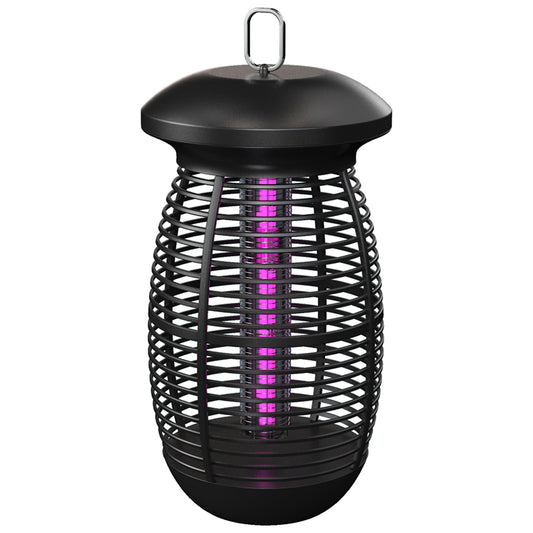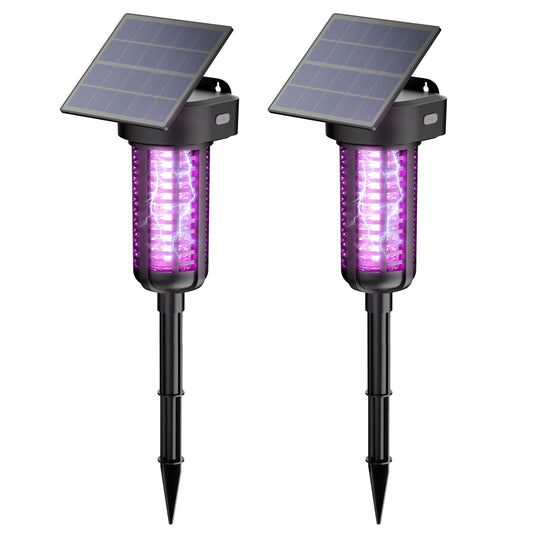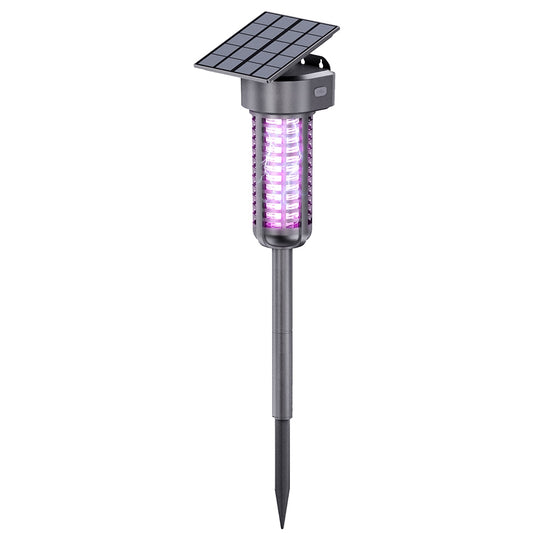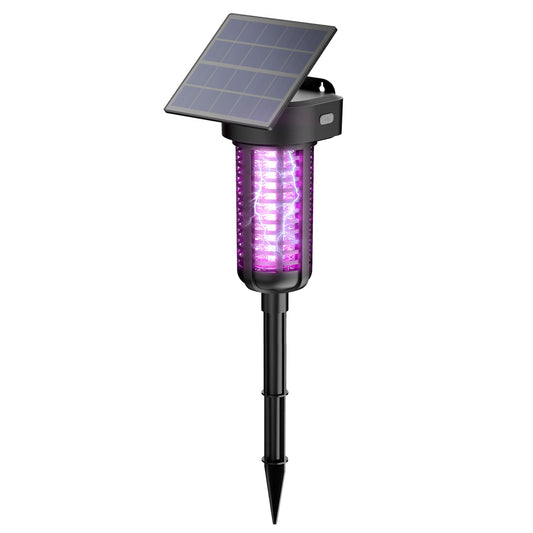When it comes to enjoying your outdoor spaces without being harassed by insects, a bug zapper can be a highly effective solution. Choosing the right bug zapper for outdoor use requires considering various factors, including the device’s effectiveness, durability, and suitability for your specific needs. Here’s a comprehensive guide to help you make an informed decision.
1. Coverage Area
The coverage area is one of the most critical factors to consider when selecting an outdoor bug zapper. Outdoor spaces vary significantly in size, so it’s essential to choose a zapper that can cover the entire area you intend to protect. For small patios or balconies, a zapper with a coverage area of up to 1,000 square feet may be adequate. Larger yards or garden areas may require a unit that covers 2,000 square feet or more. Be sure to assess the size of your outdoor space and select a zapper that offers sufficient coverage to ensure effective insect control.
2. Type of Insects
Different types of insects are attracted to different things. While many bug zappers are effective against flies, moths, and beetles, their effectiveness against mosquitoes can vary. Mosquitoes are more attracted to carbon dioxide and body heat than to UV light alone. For this reason, many outdoor bug zappers designed to combat mosquitoes incorporate additional attractants like octenol or even use CO2 to lure them in. If mosquitoes are a major problem in your area, consider a zapper with these additional features.
3. Durability and Weather Resistance
Outdoor bug zappers need to withstand various weather conditions, including rain, wind, and extreme temperatures. Look for models made from durable, weather-resistant materials such as high-grade plastics or metal. Ensure the zapper is rated for outdoor use and can handle exposure to the elements without compromising its functionality. Some models come with additional protective features like waterproof seals and UV-resistant coatings, enhancing their durability and longevity.
4. Power Source
Outdoor bug zappers can be powered in several ways, including electricity, batteries, and solar power. Electric zappers often provide the most consistent performance but require an accessible power outlet and may need extension cords. Battery-operated models offer greater flexibility and portability but require regular battery replacements or recharging. Solar-powered zappers are eco-friendly and cost-effective in the long run but may not be as powerful as electric models. Choose a power source that best suits your outdoor setup and convenience needs.
5. Installation and Portability
Consider how easy it is to install and move the bug zapper. Some models are designed to be hung from hooks or mounted on walls, while others are freestanding and can be placed on tables or the ground. Portable zappers are ideal if you need to move them around different areas of your yard or take them with you on outdoor adventures like camping. Ensure the zapper comes with clear installation instructions and necessary hardware for your preferred setup.
6. Safety Features
Safety is always a concern, especially in outdoor settings where children and pets may come into contact with the zapper. Look for models with protective housing that prevents accidental contact with the electrified grid. Some zappers have additional safety features such as automatic shut-off if the unit is tipped over. Ensuring the zapper is safe to use around your family and pets is crucial for peace of mind.
7. Noise Level
While the sound of zapping insects might be satisfying to some, it can be disruptive to others. If noise is a concern, opt for zappers that operate more quietly. Some advanced models are designed to minimize noise, making them more suitable for use during gatherings or quiet evenings outside.
8. Maintenance
Regular maintenance is necessary to keep your bug zapper working efficiently. Models with removable collection trays or easy-to-clean grids simplify the cleaning process. Consider how easy it is to access and clean these parts when choosing a zapper. Some units also have self-cleaning features, which can save you time and effort.
Choosing the right bug zapper for outdoor use involves evaluating factors such as coverage area, type of insects, durability, power source, installation, safety features, noise level, and maintenance requirements. By carefully considering these aspects, you can select a bug zapper that effectively reduces insect problems, enhancing your outdoor experience. A well-chosen bug zapper not only ensures a more comfortable and enjoyable outdoor environment but also contributes to the overall safety and health of your family and guests.
1. Coverage Area
The coverage area is one of the most critical factors to consider when selecting an outdoor bug zapper. Outdoor spaces vary significantly in size, so it’s essential to choose a zapper that can cover the entire area you intend to protect. For small patios or balconies, a zapper with a coverage area of up to 1,000 square feet may be adequate. Larger yards or garden areas may require a unit that covers 2,000 square feet or more. Be sure to assess the size of your outdoor space and select a zapper that offers sufficient coverage to ensure effective insect control.
2. Type of Insects
Different types of insects are attracted to different things. While many bug zappers are effective against flies, moths, and beetles, their effectiveness against mosquitoes can vary. Mosquitoes are more attracted to carbon dioxide and body heat than to UV light alone. For this reason, many outdoor bug zappers designed to combat mosquitoes incorporate additional attractants like octenol or even use CO2 to lure them in. If mosquitoes are a major problem in your area, consider a zapper with these additional features.
3. Durability and Weather Resistance
Outdoor bug zappers need to withstand various weather conditions, including rain, wind, and extreme temperatures. Look for models made from durable, weather-resistant materials such as high-grade plastics or metal. Ensure the zapper is rated for outdoor use and can handle exposure to the elements without compromising its functionality. Some models come with additional protective features like waterproof seals and UV-resistant coatings, enhancing their durability and longevity.
4. Power Source
Outdoor bug zappers can be powered in several ways, including electricity, batteries, and solar power. Electric zappers often provide the most consistent performance but require an accessible power outlet and may need extension cords. Battery-operated models offer greater flexibility and portability but require regular battery replacements or recharging. Solar-powered zappers are eco-friendly and cost-effective in the long run but may not be as powerful as electric models. Choose a power source that best suits your outdoor setup and convenience needs.
5. Installation and Portability
Consider how easy it is to install and move the bug zapper. Some models are designed to be hung from hooks or mounted on walls, while others are freestanding and can be placed on tables or the ground. Portable zappers are ideal if you need to move them around different areas of your yard or take them with you on outdoor adventures like camping. Ensure the zapper comes with clear installation instructions and necessary hardware for your preferred setup.
6. Safety Features
Safety is always a concern, especially in outdoor settings where children and pets may come into contact with the zapper. Look for models with protective housing that prevents accidental contact with the electrified grid. Some zappers have additional safety features such as automatic shut-off if the unit is tipped over. Ensuring the zapper is safe to use around your family and pets is crucial for peace of mind.
7. Noise Level
While the sound of zapping insects might be satisfying to some, it can be disruptive to others. If noise is a concern, opt for zappers that operate more quietly. Some advanced models are designed to minimize noise, making them more suitable for use during gatherings or quiet evenings outside.
8. Maintenance
Regular maintenance is necessary to keep your bug zapper working efficiently. Models with removable collection trays or easy-to-clean grids simplify the cleaning process. Consider how easy it is to access and clean these parts when choosing a zapper. Some units also have self-cleaning features, which can save you time and effort.
Choosing the right bug zapper for outdoor use involves evaluating factors such as coverage area, type of insects, durability, power source, installation, safety features, noise level, and maintenance requirements. By carefully considering these aspects, you can select a bug zapper that effectively reduces insect problems, enhancing your outdoor experience. A well-chosen bug zapper not only ensures a more comfortable and enjoyable outdoor environment but also contributes to the overall safety and health of your family and guests.


